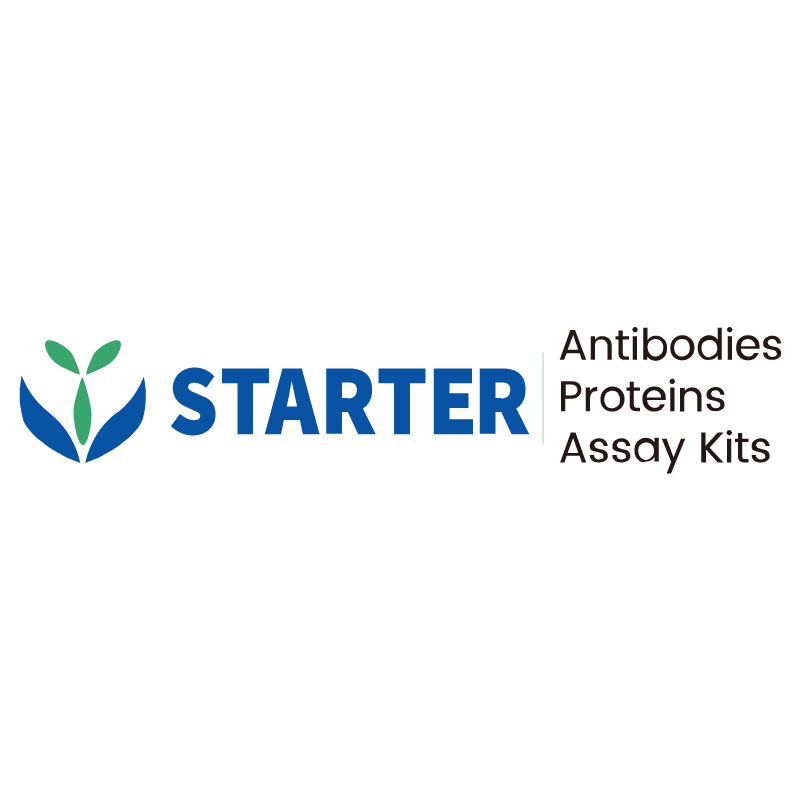WB result of HuD/ELAVL4 Recombinant Rabbit mAb
Primary antibody: HuD/ELAVL4 Recombinant Rabbit mAb at 1/1000 dilution
Lane 1: SH-SY5Y whole cell lysate 20 µg
Secondary antibody: Goat Anti-rabbit IgG, (H+L), HRP conjugated at 1/10000 dilution
Predicted MW: 42 kDa
Observed MW: 38 kDa
Product Details
Product Details
Product Specification
| Host | Rabbit |
| Antigen | HuD/ELAVL4 |
| Synonyms | ELAV-like protein 4; Hu-antigen D; Paraneoplastic encephalomyelitis antigen HuD; PNEM |
| Immunogen | Synthetic Peptide |
| Location | Cytoplasm |
| Accession | P26378 |
| Clone Number | S-1351-159 |
| Antibody Type | Recombinant mAb |
| Isotype | IgG |
| Application | WB, IHC-P, ICC, IF, ICFCM, IP |
| Reactivity | Hu |
| Positive Sample | SH-SY5Y |
| Purification | Protein A |
| Concentration | 0.5 mg/ml |
| Conjugation | Unconjugated |
| Physical Appearance | Liquid |
| Storage Buffer | PBS, 40% Glycerol, 0.05% BSA, 0.03% Proclin 300 |
| Stability & Storage | 12 months from date of receipt / reconstitution, -20 °C as supplied |
Dilution
| application | dilution | species |
| WB | 1:1000 | Hu |
| IP | 1:50 | Hu |
| IHC-P | 1:1000 | Hu |
| ICC | 1:500 | Hu |
| IF | 1:500 | Hu |
Background
HuD, also known as ELAVL4, is an RNA-binding protein that is predominantly expressed in the brain and plays a crucial role in the development, maintenance, and functionality of the nervous system. It is involved in the regulation of gene expression at the post-transcriptional level and is known to interact with various types of RNAs, including mRNA, long non-coding RNA (lncRNA), and circular RNA (circRNA). HuD is implicated in several neurological disorders, including Parkinson’s disease, Alzheimer’s disease, and amyotrophic lateral sclerosis (ALS). Its altered expression or activity is associated with disease pathology, suggesting that HuD's regulatory functions on target transcripts can have significant implications for disease progression. In terms of cellular function, HuD is involved in processes such as neuronal commitment, neurite outgrowth, and axonal recovery after injury. It achieves these functions by stabilizing target mRNAs, enhancing their translation, and regulating alternative splicing and polyadenylation of neuronal transcripts. HuD's function also extends to the regulation of the senescence-associated secretory phenotype (SASP) in cells. Downregulation of HuD can lead to increased levels of SASP factors, sensitizing cells to senescence inducers and promoting cellular senescence.
Picture
Picture
Western Blot
FC
Flow cytometric analysis of 4% PFA fixed 90% methanol permeabilized SH-SY5Y (Human neuroblastoma epithelial cell) labelling HuD/ELAVL4 antibody at 1/500 dilution (0.1 μg) / (Red) compared with a Rabbit monoclonal IgG (Black) isotype control and an unlabelled control (cells without incubation with primary antibody and secondary antibody) (Blue). Goat Anti - Rabbit IgG Alexa Fluor® 488 was used as the secondary antibody.
IP
HuD/ELAVL4 Rabbit mAb at 1/50 dilution (1 µg) immunoprecipitating HuD/ELAVL4 in 0.4 mg SH-SY5Y whole cell lysate.
Western blot was performed on the immunoprecipitate using HuD/ELAVL4 Rabbit mAb at 1/1000 dilution.
Secondary antibody (HRP) for IP was used at 1/1000 dilution.
Lane 1: SH-SY5Y whole cell lysate 20 µg (Input)
Lane 2: HuD/ELAVL4 Rabbit mAb IP in SH-SY5Y whole cell lysate
Lane 3: Rabbit monoclonal IgG IP in SH-SY5Y whole cell lysate
Predicted MW: 42 kDa
Observed MW: 38 kDa
Immunohistochemistry
IHC shows positive staining in paraffin-embedded human hippocampus. Anti- HuD/ELAVL4 antibody was used at 1/1000 dilution, followed by a HRP Polymer for Mouse & Rabbit IgG (ready to use). Counterstained with hematoxylin. Heat mediated antigen retrieval with Tris/EDTA buffer pH9.0 was performed before commencing with IHC staining protocol.
IHC shows positive staining in paraffin-embedded human cerebral cortex. Anti- HuD/ELAVL4 antibody was used at 1/1000 dilution, followed by a HRP Polymer for Mouse & Rabbit IgG (ready to use). Counterstained with hematoxylin. Heat mediated antigen retrieval with Tris/EDTA buffer pH9.0 was performed before commencing with IHC staining protocol.
IHC shows positive staining in paraffin-embedded human lung squamous cell carcinoma. Anti- HuD/ELAVL4 antibody was used at 1/1000 dilution, followed by a HRP Polymer for Mouse & Rabbit IgG (ready to use). Counterstained with hematoxylin. Heat mediated antigen retrieval with Tris/EDTA buffer pH9.0 was performed before commencing with IHC staining protocol.
Immunocytochemistry
ICC shows positive staining in SH-SY5Y cells. Anti-HuD/ELAVL4 antibody was used at 1/500 dilution (Green) and incubated overnight at 4°C. Goat polyclonal Antibody to Rabbit IgG - H&L (Alexa Fluor® 488) was used as secondary antibody at 1/1000 dilution. The cells were fixed with 100% ice-cold methanol and permeabilized with 0.1% PBS-Triton X-100. Nuclei were counterstained with DAPI (Blue). Counterstain with tubulin (Red).
Immunofluorescence
IF shows positive staining in paraffin-embedded human hippocampus. Anti- HuD/ELAVL4 antibody was used at 1/500 dilution (Green) and incubated overnight at 4°C. Goat polyclonal Antibody to Rabbit IgG - H&L (Alexa Fluor® 488) was used as secondary antibody at 1/1000 dilution. Counterstained with DAPI (Blue). Heat mediated antigen retrieval with EDTA buffer pH9.0 was performed before commencing with IF staining protocol.


